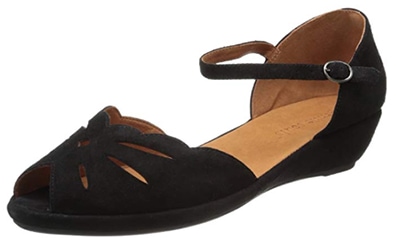How can I shrink my bunions naturally? What can I do to shrink a bunion?
- Wear wide shoes with a low heel and soft sole. In most cases, bunion pain is relieved by wearing wider shoes with adequate toe room and using other simple treatments to reduce pressure on the big toe.
- Try bunion pads.
- Hold an ice pack.
- Take paracetamol or ibuprofen.
- Try to lose weight.
Then, Can you straighten a bunion without surgery? Alternatives to surgery also include the use of orthotics, injections of cortisone or oral anti-inflammatory medication as well as wearing shoes that accommodate the bunion deformity. In addition, using a bunion lasted shoe can allow an individual with a wide forefoot and a narrow rear foot to find comfort.
in the same way, Can you push a bunion back in? Bunion surgery will usually reduce pain and improve your foot’s alignment, but it’s still possible for bunions to return. To prevent bunions from recurring after surgery, the orthopedic surgeon will advise you on footwear and may recommend that you wear a splint or custom orthotics to alleviate pressure on your feet.
Do toe spacers work for bunions? Although toe separators can help prevent overlapping toes, there is no evidence to suggest that they will cure your bunions or provide any long-term correction for misaligned toes. They may provide some short-term relief but unfortunately the effects will not last and they certainly will not get rid of your bunions.
Can you dissolve a bunion? If the bump that makes up your bunion is bone then the only true way to remove that lump is via surgery.
Can you stop a bunion from progressing?
Once a bunion starts to form, it can’t be reversed. But the right shoes can help relieve foot pain so you can live your life.
Do bunions get worse with age?
Over time, the foot bones are squeezed into an unnatural formation causing damaged anatomy and pain. It’s also a well-known fact that as we age, or gain weight, our feet spread and that worsens the problems already in place or triggers the development of bunions.
What happens if a bunion is left untreated?
If left untreated, a bunion can cause arthritis, especially if the joint in the big toe has sustained extensive, long-term damage. Bunions may cause the cartilage in the joint to deteriorate. While bunions can be remedied through surgery, arthritis and the possibility of chronic pain are not curable.
What do podiatrists recommend bunions?
A podiatrist may recommend these treatments: Padding and Taping: Often the first step in a treatment plan, padding the bunion minimizes pain and allows the patient to continue a normal, active life. Taping helps keep the foot in a normal position, thus reducing stress and pain.
Can I straighten my bunion without surgery?
Bunions can’t be reversed, and unfortunately, they don’t go away on their own. Once you have a bunion, it will likely continue to grow over time. Luckily, many people don’t need to have surgery to treat their bunions. It’s possible to find pain relief through home remedies, orthotics and other treatments.
What is the new procedure for bunions?
Lapiplasty® is a new procedure using patented technology to correct not only the bunion, but its root cause. It straightens three dimensions of alignment of the metatarsal bone. First, it corrects the sideways lean of your metatarsal bone.
Can you get rid of a bunion without surgery?
Bunions can’t be reversed, and unfortunately, they don’t go away on their own. Once you have a bunion, it will likely continue to grow over time. Luckily, many people don’t need to have surgery to treat their bunions. It’s possible to find pain relief through home remedies, orthotics and other treatments.
Is walking barefoot good for bunions?
GO BAREFOOT
Going barefoot is ideal in the beginning stages of bunions. When barefoot, the joints of the toes will get stronger, an important part of good foot health.
What is the root cause of bunions?
“The root cause of a bunion is an unstable joint at the base of the foundation of the metatarsal bone.” With an unbalanced foundation, the bone leans out of alignment and creates a bump on the side of the foot at the base of the big toe.
Why do we develop bunions?
Bunions usually develop slowly. Pressure on the big toe joint causes the big toe to lean toward the second toe. Over time, the normal position of the bone, tendons, and ligaments changes, resulting in the bunion deformity. Often, this deformity gradually worsens over time and may make it painful to wear shoes or walk.
Why do bunions get worse with age?
Over time, the foot bones are squeezed into an unnatural formation causing damaged anatomy and pain. It’s also a well-known fact that as we age, or gain weight, our feet spread and that worsens the problems already in place or triggers the development of bunions.
How do you fix a bunion without surgery?
Alternatives to surgery also include the use of orthotics, injections of cortisone or oral anti-inflammatory medication as well as wearing shoes that accommodate the bunion deformity. In addition, using a bunion lasted shoe can allow an individual with a wide forefoot and a narrow rear foot to find comfort.
Is a Bunionectomy worth it?
The only permanent cure for a bunion is surgically removing it. Bunion surgery is worth it for those who want to ease pain and resume their ability to do things like walk barefoot, play sports, and wear their favorite shoes again.






